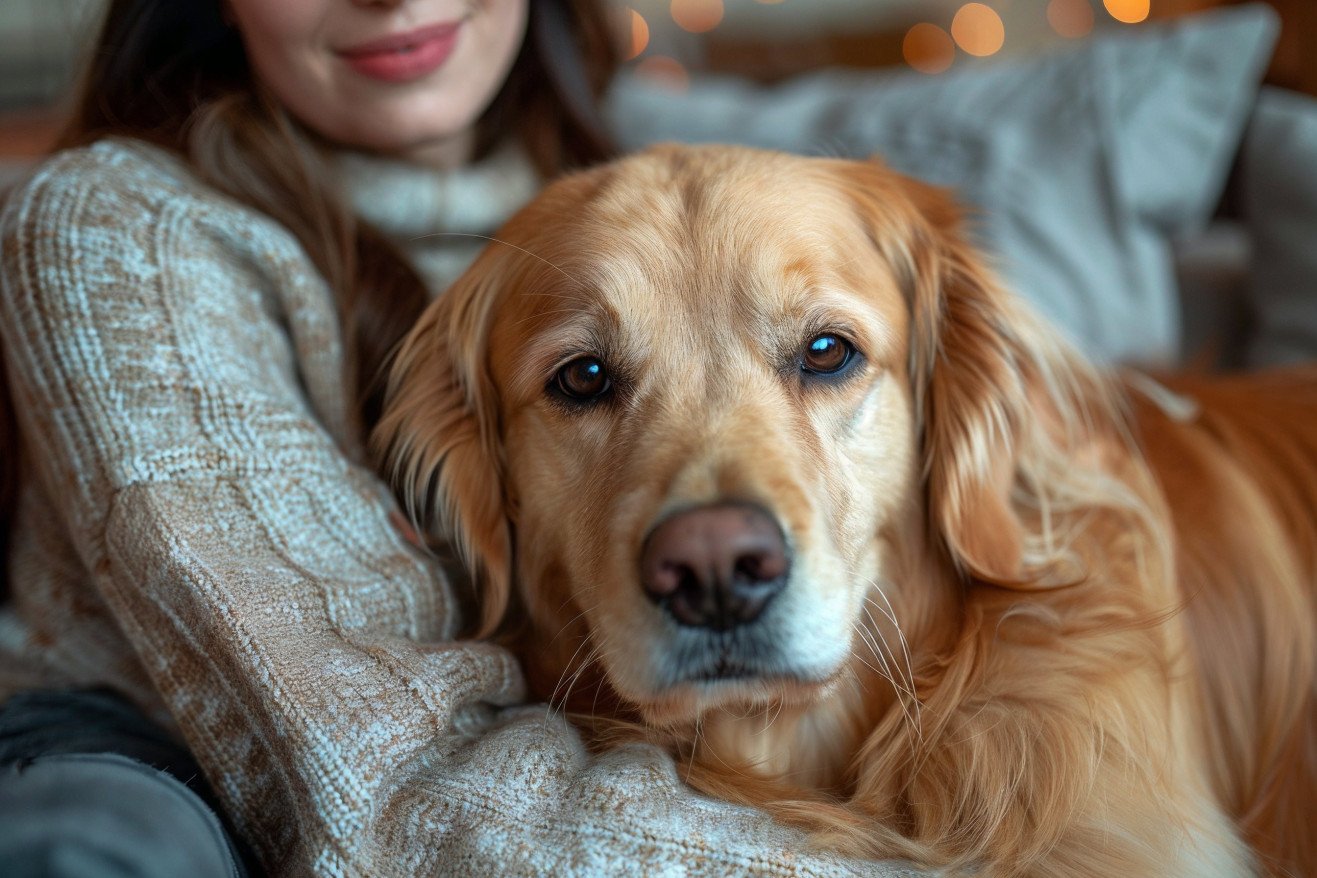Why Does My Dog Bury His Head Into Me? The Science Behind Canine's Affectionate Gesture
4 April 2024 • Updated 3 April 2024

If you're a dog owner, you've probably had your dog nuzzle or bury their head into you at some point, but what exactly makes them do this? Dogs bury their heads into their owners to show affection, seek comfort, and to be closer to their owner's scent. This behavior is a pack instinct that helps dogs bond with their human "pack" and release pheromones that help them feel more secure.
This article will explore the findings of animal behavior scientists who have studied the evolutionary roots of this sweet behavior. By learning about why dogs bury their heads, you'll come to appreciate your dog's emotional intelligence and their natural inclination to maintain a strong pack bond. This knowledge will help you form a stronger bond and build a better human-dog relationship.
Why does my dog bury his head into me?
Comfort and Security: Head-Burying as a Coping Mechanism
For dogs, head-burying can be a way to cope with feelings of stress and anxiety. According to PawSafe, this is especially common in dogs with separation anxiety or those that are generally anxious. By burying their heads in their owners, dogs can seek solace in the familiar scents and warmth of their human family.
Dogs may bury their heads in response to loud noises, new places, or being away from their owners. As K9 Basics points out, head-burying can help dogs block out external stimuli that are causing them stress. This is an instinctual behavior that goes back to their ancestors, who would huddle together to stay warm and safe.
When dog owners understand that head-burying can be a sign of anxiety or fear, they can work to address the root cause and help their pet feel better. In fact, the Doggie Blog suggests that if you notice your dog is burying their head more than usual, it's time to take action to help them feel more comfortable. This realization can also help strengthen the human-dog bond, as it can help the dog feel safe and secure.
Scent and Territory: The Role of Head-Burying in Marking and Bonding
Given dogs' keen sense of smell, head-burying might be a way for dogs to enjoy and mark their territory with their scent. According to Impersonate Me, this can help dogs strengthen their bond with their human pack and claim ownership of their territory. By burying their heads, dogs can release their pheromones and mark their owners with their scent, which can help them feel more connected.
This might also be a way for dogs to connect with their owners' emotions and provide comfort by being close to their scent. As mentioned by Purina, nuzzling and head-burying can be a sign of stress or a need for comfort in some cases, as opposed to affection. Recognizing the role of scent and territory in head-burying can help you better understand dogs' natural instincts and their need for a strong pack relationship.
Breed Differences: Why Different Dog Breeds Tend to Bury Their Heads
There are several reasons why certain dog breeds are more likely to bury their heads in their owners or other objects. Some of these reasons are tied to the breeds' ancestral history. For example, terriers were originally bred for hunting and digging, and this may make them more likely to burrow and seek out den-like spaces, according to BarkLikeMeow. Meanwhile, dachshunds' long, low bodies may make them more likely to feel comfort when they burrow and nuzzle into tight spaces or under covers, according to The Wildest.
Finally, huskies were originally bred for cold climates, and this may make them more likely to bury their heads in pillows and other objects as a way to stay warm and seek shelter, according to Storables. Recognizing these breed-specific tendencies can help dog owners understand and support their pets' natural behaviors and preferences. This, in turn, can help them build a stronger relationship with their dogs and ensure their pets' happiness and health.
What Does Head-Burying Mean? How to Understand Your Dog's Body Language
While head-burying is a positive behavior, it's still important to look at the rest of your dog's body language to understand what's going on. According to Purina, if the rest of your dog's body is relaxed, with soft eyes and a wagging tail, this could mean that they are showing you affection and are happy. If, however, the rest of their body language seems to indicate stress, such as panting, whining, or trembling, this could mean that they are using the head-burying as a way to cope with their anxiety or fear, as mentioned by K9 Basics.
You should also look at how often and how intensely your dog is burying their head to understand what it means. As pointed out by Dog Charming, understanding your dog's body language can help you understand what they need and how to respond to their emotions. This can help you make sure that your dog feels safe and secure in their environment.
How to Help Your Dog Burrow: Tips for Dealing With Head-Burying Behavior
If your dog is constantly burying their head, you'll want to make sure that you're doing everything you can to help them feel comfortable and secure. According to PawSafe, this means making sure that you have soft, warm blankets and beds that your dog can burrow into and make a nest, especially in the areas of your home where they spend the most time.
In addition, The Wildest recommends that you make sure that the blankets and bedding that you provide are breathable and free of any potential hazards that could cause your dog to get stuck or injured. You can also help your dog feel more comfortable by creating safe spaces or hiding spots that they can go to when they're feeling stressed or overwhelmed.
That said, if the behavior is causing problems or happening too frequently, it may be time to work with a professional dog trainer or behaviorist, according to Storables. They can help you get to the bottom of the problem and come up with a plan to manage it in a way that ensures your dog's safety and well-being.
Conclusion: Understanding Head-Burying
Head-burying is a normal and loving behavior that demonstrates the strong bond between dogs and their human caregivers. Knowing the reasons behind head-burying, including comfort-seeking, territory-marking, and affection, can help you better understand and connect with your dog. By learning to recognize and respond to your dog's head-burying behavior, you can help them feel more comfortable and secure.
This, in turn, can help you strengthen your bond with your dog and improve their well-being. By understanding the meaning of this loving behavior and accepting it, you can build a more meaningful and positive relationship with your dog.


